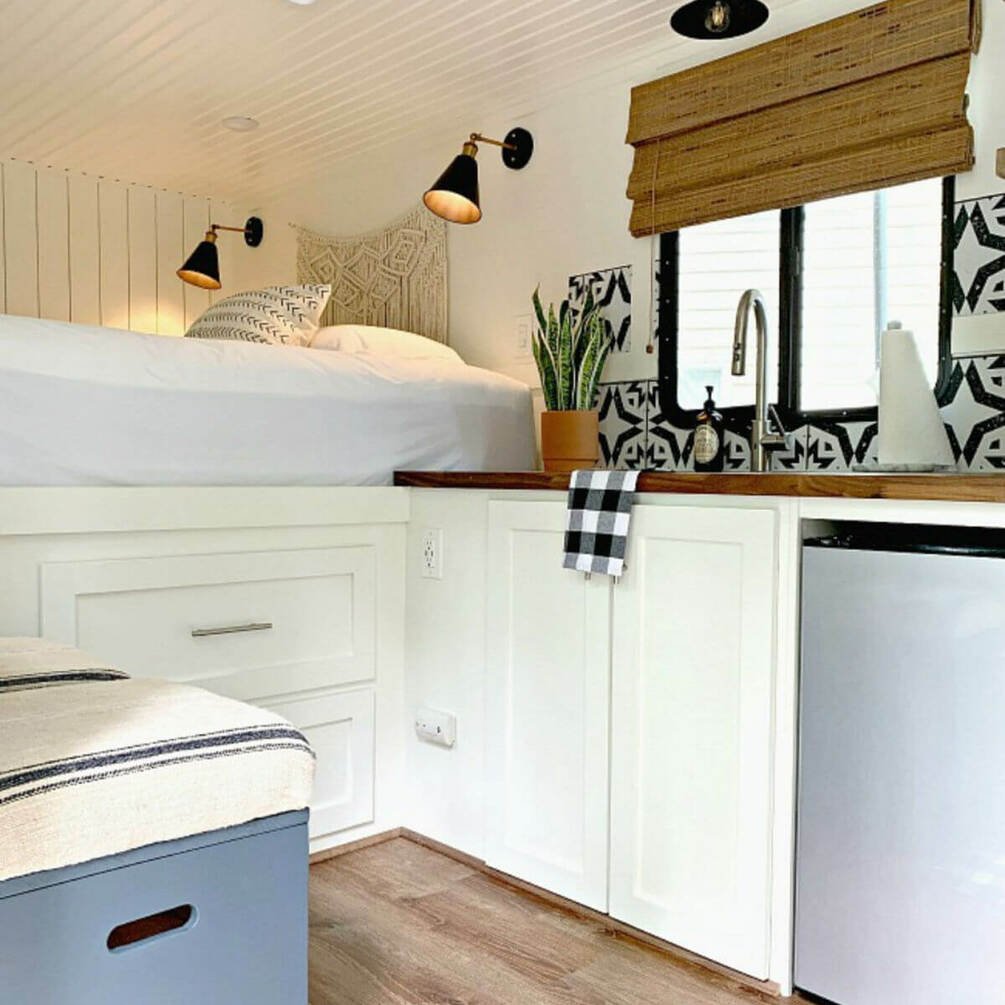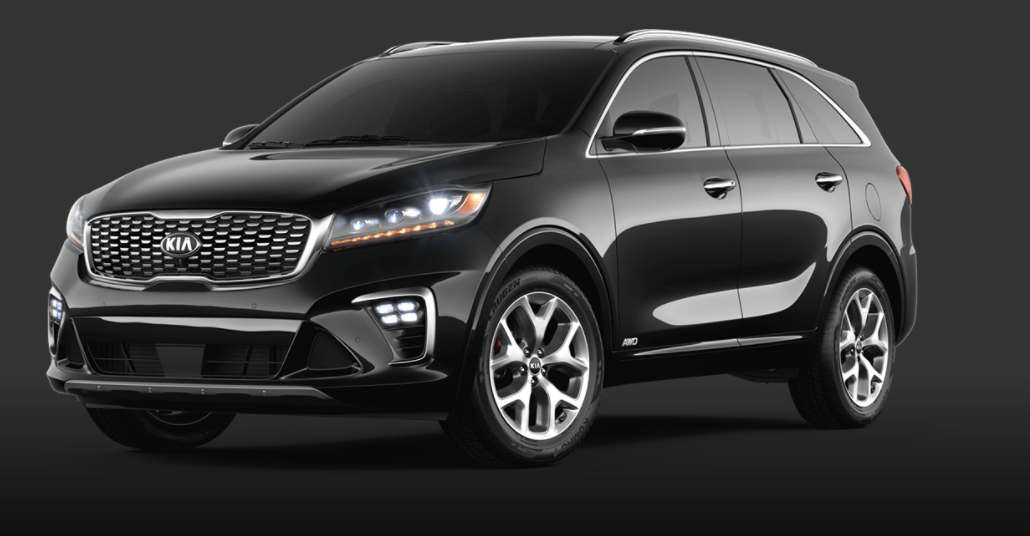Blue View - The Next Blue?
/The next Blue may not be blue - and may not even be a van for that matter…
Blue, not that long ago
We had some very mixed emotions when we sold Blue. On the one hand, camping in our Ford Transit was great. Marcie said it perfectly in a blog earlier this year; “When it was time to take off for a long trip in Blue, we just put our freshies in the fridge, packed some clean clothes, changed the sheets, refueled and off we'd go... for months at a time. No matter where we decided to stop for the night... in a campground, at a dispersed camping site or in a WalMart parking lot, we just parked and climbed into our comfy bed when we were tired. We had lights, fans and we could brew hot coffee in the morning without ever leaving the van.” We could set up camp in five minutes and we had everything we needed stowed neatly in its place.
On the other hand, there were a few things we’d do differently. Blue was definitely a fair weather camper. He was uncomfortable to sit in for long periods of time when it was cold, rainy or, perish the thought, snowy outside. High on the list for the next time around, assuming there is a next time, is to add more comfortable seating and an auxiliary heater.
Our biggest problem, however, was the number of warranty and recall issues we had, made worse by the very poor Ford service departments we dealt with… especially those in Las Vegas and Arizona. In the two years we owned him, he was in the shop eleven times for a total of 109 days. The culmination was the 7 weeks he spent sitting in the service department of Jones Ford in Verde Valley, AZ., waiting for the technician to get around to him. We could have bought a car for what we spent on car rentals.
Since selling Blue, we’ve been tent camping, which has been fine, but certainly has its drawbacks as well. We don’t much care for sleeping in a tent when it’s too hot, rainy or too cold. Unpacking and setting up our camp takes about 45 minutes, and packing up in the morning takes another hour or so, making it less than ideal for roadtrips… not to mention WalMart and Home Depot kind of frown on tent camping in their parking lots.
Our current camping style
Several of our friends have small, ultralight camping trailers and highly recommend them, so we looked into buying one. Our Sorento would have no problem towing one, and they are cute, compact and totally self-contained. On the downside, they are pricey, even more so with the pandemic shortages, and in short supply. In addition, we have our own ideas about what we want in our camper and so far haven’t found a layout we loved.
So, a couple of months ago, we decided to build another van/camper conversion. Nissan, Dodge and Mercedes all make suitable vans… we wouldn’t have to buy another Transit. This time around, we’d make all the improvements we lacked in Blue. When we started looking, however, we encountered a couple of teeny-tiny complications… suitable vans are scarce as hen’s teeth and what are available are way overpriced. Our options seemed to be keep looking for a van with the options we wanted and pay too much for it; order a 2022 model with delivery sometime between May and December; or put our plan on hold for a year or so. We opted for the latter.
Then we discovered yet another option - we encountered a cargo trailer that had been converted to a camper. The owner had done quite a creditable job, in fact. Once I began checking into this possibility, I found that there are probably thousands of converted cargo trailers out there, as well as forums, and dozens of YouTube videos. Now that I’ve started looking, I see them frequently on the highways and rest areas. Once again, I’ve amazed myself at how totally oblivious I’ve been about something I should have been keenly aware of.
Some cargo trailer conversions are quite nice. Courtesy of Chatfield Court
A reasonable size cargo trailer
Converting a cargo trailer seems to make a lot of sense. The basic trailer is lightweight, reasonably inexpensive and robust. Since the interior is essentially cube shaped, building it out is easier than upfitting a van which has curved and tapered sides.
Marcie and I began discussing the possibility during our latest roadtrip and came up with some pros and cons…
Pros:
Inexpensive. Depending on the size, quality and age, a good trailer can be found for between $2000 and $8000, and the entire build-out could be completed for somewhere between $5000 - $20,000. Compare this to $25,000 - $70,000 for a commercial ultralight camping trailer, $40,000 - $80,000 to build out a van (and add another $10,000 - $20,000 in today’s market), or $75,000 - $150,000 to buy a commercial van conversion.
Lightweight. A basic aluminum cargo trailer weighs between 1200 lbs. and 2200 lbs., depending on size and features. If I’m careful, the build I have in mind will add 800 - 1000 lbs., resulting in a total weight of 2000 - 3200 lbs., which should be quite towable with our six cylinder Sorento.
Easy build. As mentioned before, the interior of a cargo van is essentially a cube with flat, rectangular walls, making it much easier to build out. For example, standard cabinets can be used instead of building custom cabinets that fit the curvature and taper of the sides of a van.
The interior of a new cargo trailer, ready to build on
Long lasting. The trailer and build-out are pretty simple, and there’s not much to wear out. If the tires, bearings, and maybe the suspension system are replaced as needed, the trailer will probably last a million miles, totally independent of the tow vehicle. If we like our trailer and do the upfitting well, we may replace the tow vehicle several times over the life of the trailer.
Vehicle availability during build-out. One of the problems with upfitting a van is that the van can’t be used while working on it, pretty much requiring a second vehicle. With a trailer, the tow vehicle is always available while the trailer is being worked on.
Maneuverability of tow vehicle. Blue was our only vehicle, and while we thought he was just the right size for our camper, he was a little large for day-to-day errands, shopping and running around. Marcie, especially, found him difficult to maneuver in tight parking lots, and we were often surprised when his 9’ height unexpectedly prevented us from going somewhere, like many parking garages… and the arrivals level at McCarran Airport. Nor was he particularly economical for in-town driving. These are all non-issues with our Sorento, of course; at least when it’s disconnected from the trailer.
Our Sorento is a lot more maneuverable than Blue was
Cons:
Maneuverability. Maneuvering the trailer around town, in tight campgrounds, and in parking lots will be more stressful than it was with Blue. When I was in college, I had a landscaping business. I got pretty good at maneuvering a pickup and trailer in city traffic and had no trouble backing up… but that was a long time ago. Good mirrors along with side view and backup cameras will no doubt help, but I’m sure it’ll still take awhile to get comfortable pulling a trailer again.
Appearance. No matter how well the interior is finished, the exterior is still going to look like what it is… a boxy utility trailer that’s been converted to a camper. Some designs look better than others, certainly, and the exterior looks can be enhanced by adding windows, handles, exterior lighting and maybe some decals, but it’s never going to be mistaken for an Airstream or any of the other cute little commercial camper trailers.
One of the nicer exteriors we’ve seen - courtesy of Bobby’s YouTube
Given all that, I think that if we could find a good deal on a nice van, we’d still be inclined to go the van conversion route, but finding the right van doesn’t seem likely to happen anytime soon. The more we think about upfitting a cargo trailer, however, the more intriguing it seems. Stay tuned… I’m sure I’ll be talking more about this in the coming weeks.








